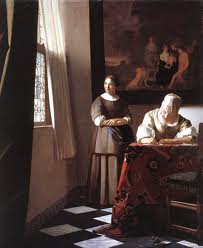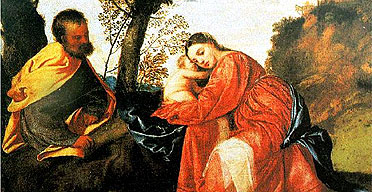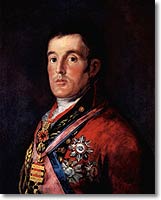|
Received wisdom is that the theft of major works of art is usually carried out at the direction of a billionaire stroking a white cat in a remote castle high in the Alps, surrounded by Old Masters and iconic modern paintings.
But Charles Hill, one of the world’s leading art theft detectives, pointed out at his compelling talk on June 28th that nearly all theft of such art is not undertaken on orders from the super-rich – but by low-level criminals intent on trying to break into international crime with the help of a trophy.
Charles told a packed audience that such villains have seen films, such as the Thomas Crown Affair or Sean Connery in Entrapment and think that stealing such works of art is cool. Even the less intelligent ones realise that it is impossible to sell a stolen Monet or Cezanne to an art dealer – but it can still offer kudos, and to arrive at a meeting with a drugs cartel with an Old Master tucked under the arm can be helpful proof of criminal status.
Kempton Bunton, the man accused of the theft of Goya’s portrait of the Duke of Wellington from the National Gallery in 1961 came from a very humble background, working as a bus driver on £8 a week. The theft entered popular culture and an image of it appeared in the lair of the Bond villain, Dr No – but, in reality, it was never stolen to order. Four years later, it was returned to the left luggage office at Birmingham New Street Station and, in later years, documents suggested it was Bunton’s son, John, who had actually carried out the theft.

During his days as an undercover detective with Scotland Yard’s Art and Antiques Squad, Charles witnessed at close hand the kind of ruthless criminals associated with art theft. He spoke with the passion of a collector as he detailed his involvement with the recovery in Belgium of several paintings taken from the home of Sir Alfred Beit at Russborough, near Dublin in 1986, including Vermeer’s Lady Writing a Letter with her Maid and Goya’s Portrait of Dona Antonia Zarate.
The gang had been led by the violent Irish mobster, Martin Cahill, who wanted to use them as an entrée to international cocaine smuggling. It was considered one of the most significant art thefts since World War II and the haul of eighteen paintings included works by Rubens, Thomas Gainsborough and Sir Joshua Reynolds.
The Belgium gendarmes later discovered the Vermeer and Goya when they arrested three Irishmen and a Yugoslav in rented cars near Antwerp.They also found six other artworks – two more paintings from Russborough, three drawings by Picasso and small painting by Degas. However, no trace has been found of two small capriccio pictures by Guardi, although Charles told us he has an idea about where they are. And, in one final twist, Martin Cahill was later assassinated in 1994 in an IRA feud.
Such a violent world would terrify most people, but Charles had experienced hostile environments before. An Anglo-American, Charles served as a paratrooper in Vietnam and gained a reputation for staying alive. He later studied theology at King’s College, London, and had considered becoming an Anglican priest before joining the Metropolitan Police as a bobby on the beat, rising to the rank of Detective Chief Inspector.
 In later years, alerting the criminal fraternity that an insurance reward was on offer, Charles was also instrumental in the recovery in 2002 of Titian’s Rest on the Flight into Egypt, worth an estimated £8 million, seven years after it was stolen from Longleat, in Wiltshire - home of the Marquis of Bath. The 16th Century painting was later found in a plastic bag at a bus-stop in the London area in reasonable condition, although it needed conservation work.
In later years, alerting the criminal fraternity that an insurance reward was on offer, Charles was also instrumental in the recovery in 2002 of Titian’s Rest on the Flight into Egypt, worth an estimated £8 million, seven years after it was stolen from Longleat, in Wiltshire - home of the Marquis of Bath. The 16th Century painting was later found in a plastic bag at a bus-stop in the London area in reasonable condition, although it needed conservation work.
However, Charles’s biggest coup was probably his part in the recovery of Edvard Munch’s The Scream after thieves raided the National Gallery in Olso, in 1994. The robbers had left a note in the space vacated by their theft, with a postcard featuring a couple of men doubled up with laughter and the scrawled message: “Thanks for the poor security”.
Charles recounted how he had posed as a bow-tied representative of the Getty Museum and carried a £500,000 rewardin a suitcase. He was handed the painting and later called in the Norwegian Police to complete the sting. It is still one of his greatest moments - seeing The Scream brought up from the cellar of a summer house along Oslo Flord and verifying its authenticity by the distinctive wax-splatters from a blown-out candle on one corner of the canvas.
Closer to home, Charles has been involved in the search for Cezanne’s Auvers-sur-Oise, which was taken from the Ashmolean Museum in Oxford, on Millennium Eve in 1999. In fact, the thief’s original plan a few years earlier had been to snatch the Alfred Jewel from the museum, but he changed plans and went for the Cezanne, lowering himself through the skylight. The painting has never been recovered, but Charles told us he is fairly sure which criminal ring is hoarding it.

To highlight the lethal world of art theft, Charles detailed the raid on the Sir John Soane Museum in London, in which five men tried to steal works of art worth millions of pounds, including two paintings of J.M.W Turner and the eight canvases making up Hogarth’s The Rake’s Progress. Following an underworld tip-off, the police were waiting and the gang leader, Dennis Bergin, holding a sawn-off shotgun, was shot dead during a gun fight and his accomplices were given long sentences at the Old Bailey.
Since retiring from Scotland Yard, he has set up Charles Hill Art Risk, tracking down stolen art, and he also acts as a security adviser to members the Historic Houses Association – but there is still much work to be done. Amazingly, only a few years ago, among the list of stolen masterpieces still to be recovered were 355 Picassos, 250 Chagalls, 180 Dalis, 120 Rembrandts and 115 Renoirs.
“It seemed hard to reconcile the bespectacled avuncular figure on stage with the heart-stopping encounters he’s had with ruthless criminals. But Charles clearly has the passion of an art collector and the drive and instincts of a seasoned detective – and many people have benefitted from his extraordinary commitment and courage. Not just the owners of recovered works of art, but also those who can look at them once again, back where they belong – Ian Phelps, Banbury
|